Sprinting towards social change
Posted by Remya Padmadas on July 02, 2018Pratham Books’ StoryWeaver is one of four organisations taking part in DataKind Bangalore's Sprint. The first step in the Sprint was a Project Accelerator which was held on June 10, 2018 which saw 45 participants including volunteers, DataKinders and Non-Profit partners come together to discuss their projects and present a problem statement. The participating NGOs were Pratham Books, Open City, Safe City and Daksh.
Pratham Books' problem statement was 'helping users discover the right content, faster'. 13 volunteers signed up to help find ways to solve this problem statement with our team. The afternoon was spent in brainstorming ideas and understanding the problem statement further. The volunteers also came up with a set of next steps.
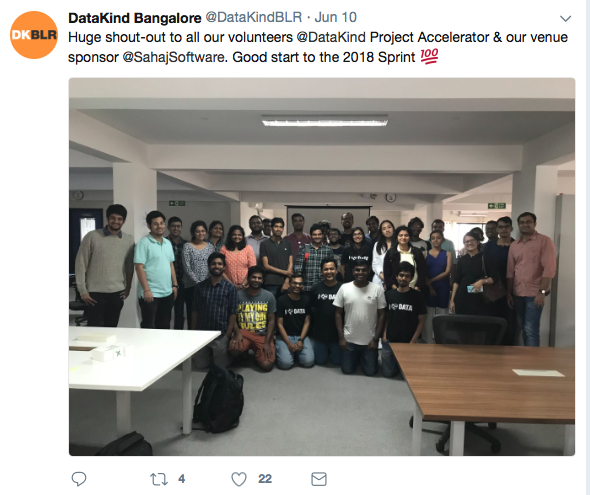
Sahil Kuchlous, one of the youngest volunteers on the team had this to say:
"I chose to attend the Data Kind event because I had recently been learning about various data analytical algorithms and techniques, and wanted to find a place where I could learn to apply them in a real-world application. I chose to work with Pratham Books because I felt like the end product they were expecting was very clear and had many interesting approaches. At first, I was apprehensive about attending the event because I knew that it would be mostly adults with much more experience than me attending, but it was a pleasant surprise to see how welcoming and accomodating everyone was to me. I really enjoyed the experience, and hope to follow the project through."
Over the next few weeks the volunteers will meet for Data Jams as part of the Sprint.
Purvi Shah, Head of Digital Projects, Pratham Books is excited about the solutions that will emerge from this collaboration. "At StoryWeaver we are very grateful to a large number of volunteers who have signed up for the project. Insights from data can play a significant role in scaling social initiatives and we are happy to partner with DataKind."
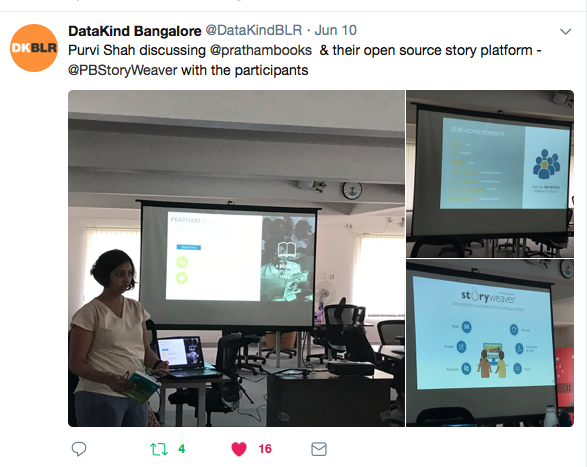
If you’d like to sign up as a volunteer join DataKind Bangalore’s slack channel #pratham_books to actively participate in various discussions and to join the next set of events.
Be the first to comment.
StoryWeaver Spotlight: Priya Muthukumar
Posted by Amna Singh on September 28, 2018StoryWeaver Spotlight turns the light on Priya Muthukumar. Priya always dreamt of flying on her very own magic carpet! Yes, today she flies to several distant lands along with different people through her stories. Priya is a storyteller and educationist who connects with people across age-groups through her storytelling initiative (Storipur in Bangalore). She continues to dream, this time.. about a greener tomorrow! She has translated many stories to Tamil for Pratham Books including 'Goodnight Tinku' and 'What Did Priya Eat'. You can read her stories The Louse's New House and A Perfect Match on StoryWeaver.

Q: What is your personal relationship with language and/or translation?
I strongly believe that languages bring people together. Even though I am not a quick learner when it comes to different languages, I can really pause and admire the beauty in languages. As a translator, I make sure I have fun, reading the story out, singing it aloud, enacting it out...imagining how the story would appeal to different readers!
Q: When you have been given a story to translate what is the process , how long does it take ?
There is no strict process or pattern that I follow. Generally, when I receive a story, I read it a couple of times in an attempt to grasp the essence of the story. As I work with children, I narrate the story to them and I get thrilled, seeing their immediate reaction. After all these immersive experiences, I start my translation, keeping the emotions which the author had tried to express through the story. And I am a complete last-minute-person! I just can't start the task before the nth minute.
Q: What do stories bring through translation?
As a strong believer in the power of stories, I believe that we all need to read, tell and listen to more stories. The whole process becomes even more beautiful, when we use different languages. It could be foreign languages, regional languages or it could one's own mother tongue. Languages are windows to another culture. And through translation, stories and languages subconsciously take the reader to another world where things are similar yet, are different !
Q: How did you cultivate the skills needed to translate books for children?
Well, this is something which I am learning, book by book. As a translator, I am very much on the learning curve. Being a Tamizh translator, reading Tamizh newspapers and books (translated and original ones) also help me. My conversations with my father in Tamizh on history, archaeology,literature, politics, almost everything under the sky also enables me to hone my skills.
Q: Does being a storyteller help your translation process?
Emotions, however subtly expressed are the 'pulse' of stories, according to me. This is a valuable lesson which I've learnt from my storytelling experiences, so far. Hence, I make sure while translating, to convey the same emotion into my work from the original story. Intonation/ voice modulation are essential aspects of storytelling, hence stories with varying 'sounds' delight me. I make sure that these sounds are more 'realistic' in the translated versions. Besides, once I translate, I read it aloud or narrate the story to different groups of listeners, to check if my translation has kept the original essence alive.
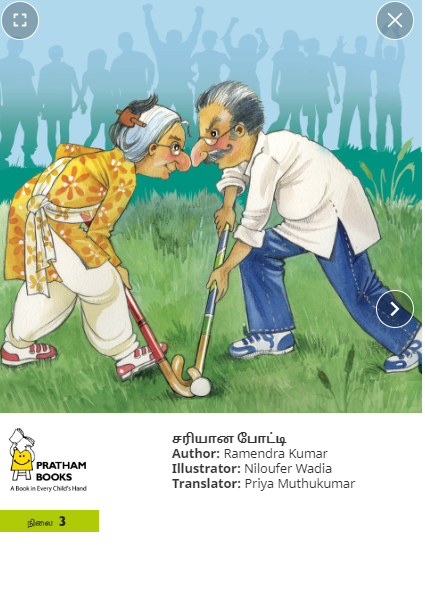
Q: What was the experience of translating a children's book like?
My first translation was for 'The Missing Bat'. I found it challenging and I remember calling up my father, asking people, cross-checking if my Tamizh equivalents for the English words were right. After working on few translations, now, I feel more confident and I am keen on learning the nitty-gritties involved in translating and also writing for chilldren.
Q: What is the toughest thing about translating from English to TAMIL? How do you navigate through words or phrases to translate?
Some words are unique to certain languages. The English language is no exception. To find exact equivalents for certain words has been challenging. In such cases, finding a word in translation close to the original is one of the options. Sarcastic overtones, jokes while translating need that extra attention. Pronunciation of names is also something I check before translating.
Q: How do you feel when your translation reaches a child?
Absolutely thrilled!
Q: How else do you think we can join hands to take more stories to more children in more languages ?
Simply by continuing to do the good work which Pratham Books and StoryWeaver is already doing. Probably, we could add more stories from History and mythology too.
Q: What type of person do you think makes a good translator for children's books?
Besides the language skills, as in any field of work, a willingness to learn and an open-mindedness would help. And anyone who has the spark, the sense-of-wonder children are born with, can always work magic with children's literature including translation!
Q: Do you have any advice for anyone who would like to become a translator?
Hmm...continue to be passionate! Read more, listen more and write more.
Teacher's Corner: Creating Flash Cards on StoryWeaver
Posted by Remya Padmadas on March 10, 2016With over a thousand stories and illustrations online for free, StoryWeaver is a great tool for educators to use in the classroom. One of the things teachers can do with StoryWeaver is create flashcards. With bright and appealing visuals that capture the eye, flash cards can be used to teach starting sounds of words, colours, spatial concepts (under-over, inside-outside), play memory games or rounds of ‘What am I?’ or ‘Where do I live?’
With over 2000 images to choose from by some of the country’s most talented illustrators, you’ll be spoilt for choice when it comes to choosing pictures.
Creating Flash Cards on StoryWeaver
1. Log in to your StoryWeaver account. If you don't have one you sign up here.
2. Click on 'Create' and choose 'Create a story by Image'.
3. Use the search box to choose what kind of images you need. Example: animals
4. Choose the layout style you'd like and start creating your flashcard set!
If you're a little unsure about creating on StoryWeaver, don't worry, it's super easy. You can watch this quick, tutorial here before you try.
You can create the flashcards in a number of languages. Here's an example of a flashcard in Hindi.
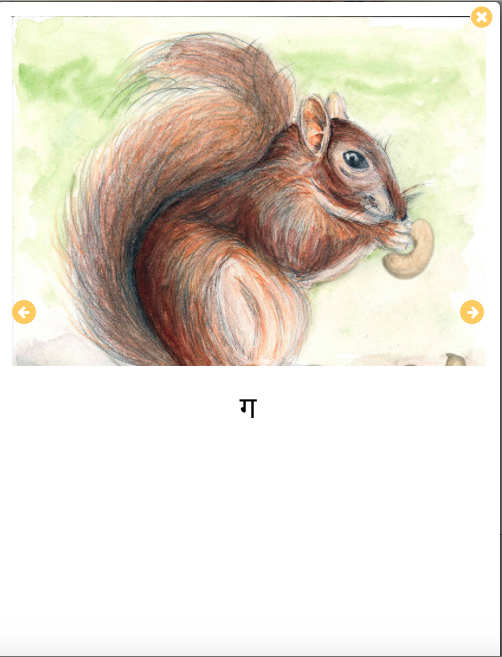
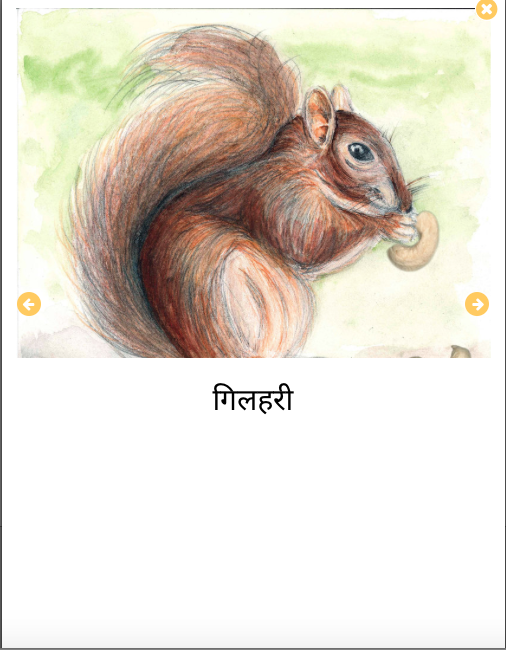
Re-leveling flashcards
Once you’ve created your flashcards, you can re-level them for different students. Take for example, the flashcard below.
You could use this for children in Pre-Primary to teach them alphabet sounds. This could be set as Level 1.
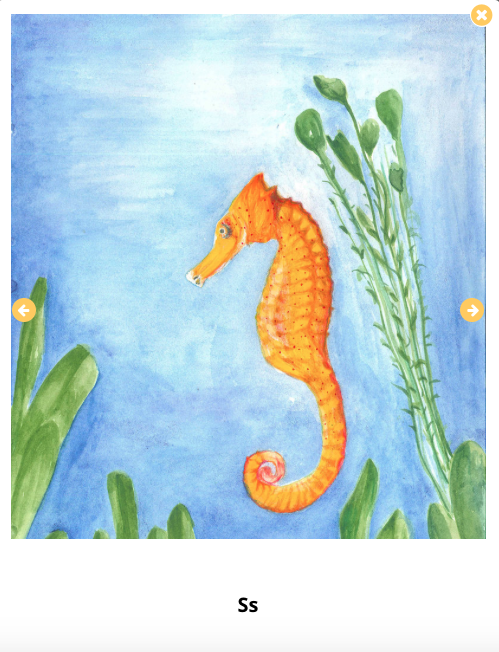
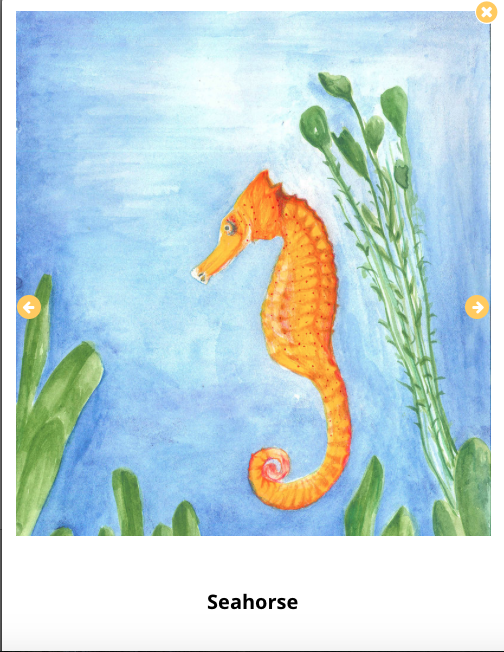
You can then use the same image for children in Primary classes to teach them concepts about animal habitats, and tag it as Level 2.
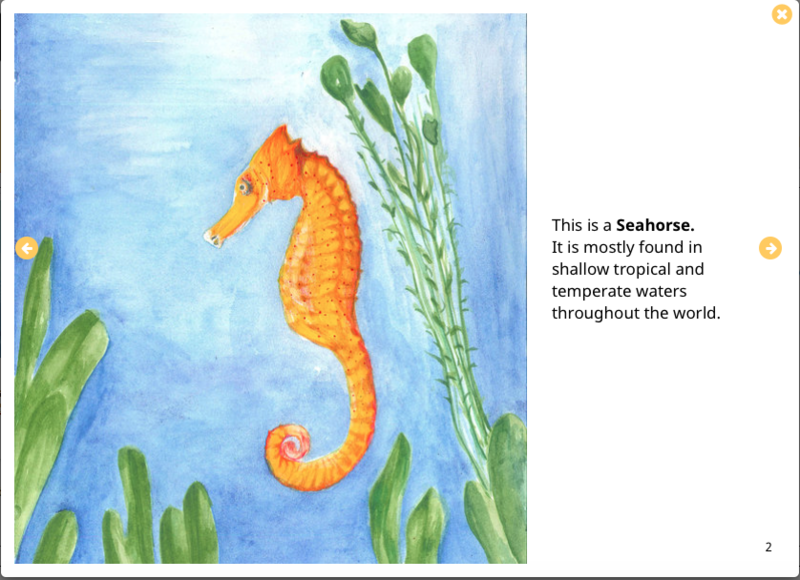
Get Inspired
‘Have you ever travelled by…?’ is a cheerful way to start a conversation about modes of transport with children.
‘Have You Seen These Birds?’ showcases birds from the humble sparrow to exotic flamingos.
‘Inhabitants of the Sea’ explores the deep blue waters of the sea and the creatures that live there.
Create your own flashcard
We have a few flashcard sets on StoryWeaver already but we'd love to see many more. Why not give it a try and tell us how you might use them in your class? You can share your ideas with us on Twitter or Facebook or send us an email at [email protected]
For more ideas on using StoryWeaver as an educator, click here.
Be the first to comment.